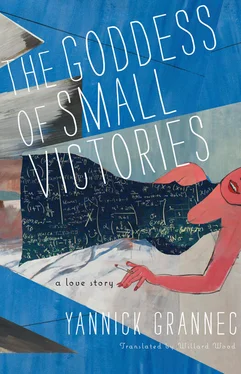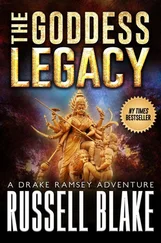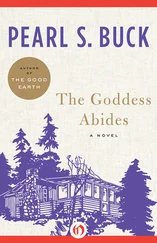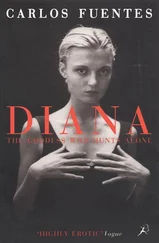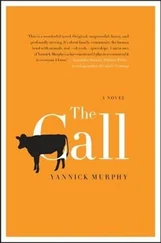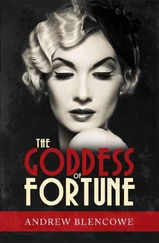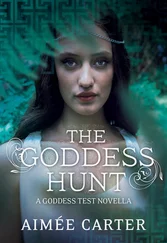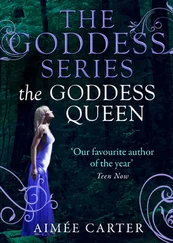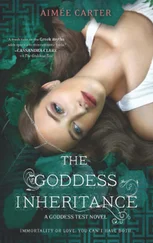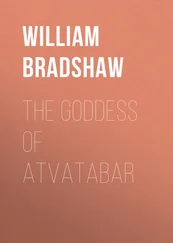63. This document, dated 1970, is included in Kurt Gödel’s Nachlass . It comes with no introduction, no commentary, no explanation of the modal system (type of logical grammar) used. Although there is no explicit reference, it seems that this “ontological proof” is based on Saint Anselm’s eleventh-century argument and on the work of Descartes and Leibniz.
64. “We are far from being able to provide a scientific basis for the theological worldview, but I believe it would be possible to show by purely rational argument (without relying on any religion’s faith) that the theological vision of the world is perfectly compatible with all known facts (including the objects that rule over this world).”—Kurt Gödel, letter to Marianne Gödel, 1961
Further Reading Select Bibliography
Brenot, Philippe. Le Génie et la folie: en peinture, musique, littérature . Paris: Plon, 1997.
Cassou-Noguès, Pierre. Les Démons de Gödel: logique et folie . Paris: Seuil, 2007.
——. Gödel . Paris: Les Belles Lettres, 2004.
Dawson, John W. Jr. Logical Dilemmas: The Life and Work of Kurt Gödel . Wellesley, MA: A. K. Peters, 1997.
Hofstadter, Douglas R. Gödel, Escher, Bach: An Eternal Golden Braid . New York: Basic Books, 1979.
Klein, Étienne. Il Était sept fois la révolution, Albert Einstein et les autres … Paris: Flammarion, 2005.
Nagel, Ernest, and James R. Newman. Gödel’s Proof . Rev. ed. Ed. Douglas R. Hofstadter. New York: New York University Press, 2001.
Sigmund, Karl, John Dawson, and Kurt Mühlberger. Kurt Gödel: Das Album — The Album . Wiesbaden: Vieweg & Sohn Verlag, 2006.
Singh, Simon. The Code Book: The Science of Secrecy from Ancient Egypt to Quantum Cryptography . New York: Doubleday, 1999.
Wang, Hao. Reflections on Kurt Gödel . Cambridge, MA: MIT Press, 1987.
Yourgrau, Palle. Gödel Meets Einstein: Time Travel in the Gödel Universe . Chicago: Open Court, 1999.
Biographies, Autobiographies, Novels
Borges, Jorge Luis. The Aleph . Trans. Andrew Hurley. New York: Penguin Books, 2004.
Denis, Brian. Einstein: A Life . New York: J. Wiley, 1996.
Einstein, Albert. The World as I See It . New York: Covici, Friede, 1934.
Lemire, Laurent. Alan Turing, l’homme qui a croqué la pomme . Paris: Hachette Littérature, 2004.
Mann, Klaus. The Turning Point: Thirty-Five Years in This Century . New York: L. B. Fisher, 1942.
Merleau-Ponty, Jacques. Einstein . Paris: Flammarion, 1993.
Zweig, Stefan. The World of Yesterday . Trans. Anthea Bell. Lincoln: University of Nebraska Press, 2013.
Borges epigraph on this page translated by Ruth L. C. Simms (Austin, TX: University of Texas Press, 1975). Céline epigraph on this page translated by Ralph Manheim (NY: New Directions, 2006). Yourcenar epigraph on this page translated by Grace Frick (NY: Farrar, Straus and Giroux, 1981). Voltaire epigraph on this page translated by Stephen G. Tallentyre (Evelyn Beatrice Hall). Wittgenstein epigraph on this page translated by C. K. Ogden (London: Routledge & Kegan Paul, 1961). Cantor epigraph on this page translated by William Ewald (NY: Oxford University Press, 1996). Dirac epigraph on this page translated by James Cleugh in Robert Jungk, Brighter Than a Thousand Suns (NY: Harcourt, 1958). Huelsenbeck epigraph on this page translated by Ralph Manheim in Robert Motherwell, The Dada Painters and Poets (1951). Lautréamont epigraph on this page translated by Paul Knight (NY: Penguin Books, 1978).
A Conversation with Yannick Grannec
HOW DOES GÖDEL’S MOST INTIMATE RELATIONSHIP, HIS MARRIAGE TO ADELE, OFFER A MORE COMPLEX UNDERSTANDING OF THE MANY DIMENSIONS THAT MADE UP THIS MAN? WHY DID YOU CHOOSE TO TELL HIS STORY FROM ADELE’S PERSPECTIVE?
When I was eighteen, I read Gödel, Escher, Bach and became fascinated by the work of Kurt Gödel. Twenty years later, I read, by chance, an essay about the friendship between Gödel and Einstein and, as the subject interested me, read other essays. In one of them, I came across a few lines about Adele that struck me as condescending. This question was implied: How could such a genius marry such a common woman?
Knowing Gödel’s life — the man was paranoid, anorectic, depressed — I wondered: How could a woman love such a difficult man for fifty years? There was nothing scientific about it, but that seemed to me to be the real mystery.
I had the intuition of a human story that needed telling, one that came with an opportunity to share what has always fascinated me, the history of science, as part of the fabric. To tell it in the voice of Adele seemed to me completely natural: she was the Candide, which allowed to me to transmit complicated ideas with simple words. I felt an immediate empathy for her, as though I’d always known her; she spoke to me of all these destinies of women, of these lives sacrificed for love or out of social obligation. She spoke to me of my mother, my grandmothers, and all those other women howling through my DNA.
IN CHAPTER 26, A POIGNANT CONVERSATION BETWEEN KURT AND ADELE MAKES GÖDEL’S ELEGANT AND ABSTRACT INCOMPLETENESS THEOREM ACCESSIBLE TO THE LAY READER. WAS IT DIFFICULT TO ACHIEVE THIS ACCESSIBILITY?
For all the parts of the book that dealt with mathematical theories, the exercise presented a succession of difficulties. First of all, it was necessary to attempt to understand. I could talk about this famous incompleteness theorem in a general way, but not in any detail; I’m not a mathematician, and I’m not at all conversant in the language of logic in which it’s expressed. Then, I had to betray . Because the language of mathematics is, by its very definition, objective. But, to integrate it into fiction, and to share it, I could only use written language, a subjective tool. To go from sign to metaphor is a betrayal. So I needed to accept, and have others accept, an inevitable inexactitude.
For the part on the continuum hypothesis, I took a course taught by a mathematician friend. This part is more developed, because I thought I understood it better, and my intention was to use only what I thought I understood, because it was important to me to be intellectually honest. Of course, often, we think we understand, but it’s only the surface of things.
TELL US ABOUT YOUR EXPERIENCE RESEARCHING FOR THE NOVEL. HOW MUCH TIME DID YOU SPEND RESEARCHING THE GÖDELS, EINSTEIN, AND OTHER PRINCETON LUMINARIES BEFORE YOU FELT COMFORTABLE WRITING ABOUT THEM? WHAT DID YOU FIND IN YOUR RESEARCH THAT WAS SURPRISING OR UNEXPECTED?
Even before beginning to write, I read a great number of documents over the course of at least a year. Of course, I had begun with everything that was within my intellectual reach that had to do with Kurt Gödel, then Einstein, then the biographies of those scientists who shared their destiny. But as soon as I pulled on one thread, an infinite tapestry appeared: I had to stick my nose into epistemology, into history in general, into philosophy, et cetera. I admit to having had a few periods of discouragement. In particular about Husserl, on whose subject, clearly, I stumbled. Like Adele, I didn’t have the keys. I assembled a wide-ranging collection of photographs to nurture my imagination (the people, the period clothing, the places, et cetera) and then I went on reconnaissance to Vienna and to Princeton, to soak up those places. In certain neighborhoods, those two cities seem to be stopped in time. It is very easy to imagine the era before the war in Vienna and the 1950s in Princeton. I had come up with a route, from house to café, from university to sanatorium, to follow in Gödel’s footsteps. I understood why, for example, they lived in the suburb of Grinzing: the 38 tram was direct from the mathematics university. Kurt didn’t like complications in his daily life. Each new discovery stirred up big emotions: seeking Kurt and Adele on the street where they lived, I found an old photography studio, at the address that had belonged to Adele’s father. I’ve returned there since, only to discover it has been replaced by a snack bar. Destiny, in this case, gave me this gift. Three years later I would have missed it. At Princeton, I timed the route, to determine the length of the conversations with Einstein. At the Gödels’ tomb, in Princeton, I cried. I’ve lived with them; they’re my family.
Читать дальше
